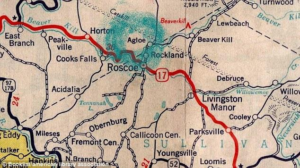
21. Let’s Build a Paper Town (MICN Missiology Series by Andrew Lupton)
I cannot thank you enough for learning alongside me these past months. As we finish this series on the missiology of the international church, I want to invite you ponder this question with me: What would it take? What would it take to put the international church on the map as one of the mission’s most strategic intersections? To answer that question, we’ll have to answer others. Where would the resources come from? How would pastoral candidates be recruited, trained, and deployed? Which cities would we target? How would our churches and their servants stay accountable, equipped, and encouraged for a lifetime of dynamic ministry to the globally mobile. How would churches like ours leave a restorative mark locally on our host cultures? What would it take for mission sending agencies and churches to invest in and through the international church?

A few years ago Dr. Doug Ota told a fascinating story at a Families in Global Transition seminar about a phenomenon that has come to be known as paper towns.1 In 1937, the General Drafting Company published a map of New York State. Intellectual property theft was just as common in those days as it is today, even among mapmakers like the General Drafting Company. Mapmakers wondered, “What’s to stop other mapmakers from just copying our work and publishing it as their own?” To prevent theft, mapmakers would set a “map trap” by creating a fake town, or paper town, at a random intersection. An empty intersection would be labeled with a town name, like Agloe. If Agloe showed up on a competitor’s map, the mapmakers would know that another company had been stealing from its map. How? Because Agloe doesn’t really exist.
A few years after the General Drafting Company’s 1937 map was published, another company’s map caught its attention. The General Drafting Company was surprised to notice Agloe on its competitor’s map. This company must have fallen into the “map trap.” “Aha! You copied our map! We know because Agloe doesn’t exist!” The other company responded, “Why don’t you go and visit and see for yourself because Agloe does exist.” Upon inspection, and much to the General Drafting Company’s surprise, the Town of Agloe existed.
What had happened was remarkable. Because Agloe appeared on the map, people started looking for it. People moved near that empty intersection. People started building homes there. People built a general store. They built a gas station. Before too long, these residents of Agloe had built a paper town. Strangers gathered and called a community “home” all because a nervous mapmaker fictitiously labeled a dot on a map.
A vast and growing people group spread across the world are looking for a place to call home. What would it take for you, for mission sending agencies and churches to partner, dream, and deploy gifted servants of the church in such a way as to put the international church on the map for this wandering people group? It will mean ambiguity. It will mean risk. It will mean taking ownership. It will mean investing time, energy, money, prayer, and strategic thinking. But this paper town is worth it. The people who will inhabit it, albeit temporarily, are worth it. They and the millions like them are worth it to Jesus. This paper town needs a church. Can we build that church together? MICN and I are at your service in that regard.
Andrew Lupton
1 https://www.dougota.nl/single-post/2016/04/27/Paper-Towns-That-Offer-Safe-Passage



